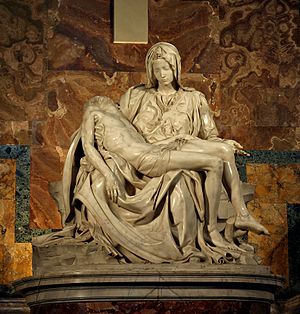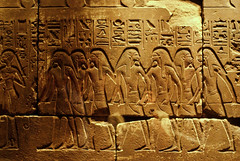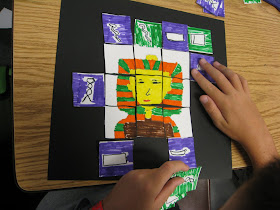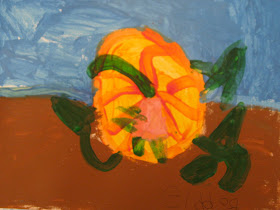Here is a fun painting technique to use if you have extra time.
Tell your students they're going to paint a picture, but first they're going to paint the entire background with a solid color. The effect ends up similar to painting on colored paper, but brighter.
Our subject was a butterfly and flowers, but this technique can be used when painting any subject.
These samples were done on canvas, but heavy paper can be used instead.
Step 1: Paint the entire background a solid color, not blue.
Step 2: Paint the subject on top of the background color.
Step 3: Paint the sky blue around the subjects, but leave a bit of the background color showing through in border areas.

This is the example I showed the students. I explained how I painted orange background first, flowers&butterfly, and blue sky last and left some orange areas showing.
I had to reiterate a few times that the orange parts are showing on purpose, and it took some reminders to get the kids to "stop" painting before their entire background color was covered. (I'm sure you're familiar with the students in your class who will keep on painting, until an adult says....."Hmmm, do you think your art might be finished?"...or, I confess, sometimes those aren't the exact words I've used.)




![Reblog this post [with Zemanta]](http://img.zemanta.com/reblog_e.png?x-id=33310188-1b4c-40ff-88f6-d081e912ac63)



 After tracing their animals, students created light, medium and dark blue or red to be used for painting their animal.
After tracing their animals, students created light, medium and dark blue or red to be used for painting their animal. 










![Reblog this post [with Zemanta]](http://img.zemanta.com/reblog_e.png?x-id=9abb311d-d006-40d9-a4bb-18b8fa975401)













![Reblog this post [with Zemanta]](http://img.zemanta.com/reblog_e.png?x-id=9b6a48bc-54c6-4103-ba2e-8733d8a41116)












